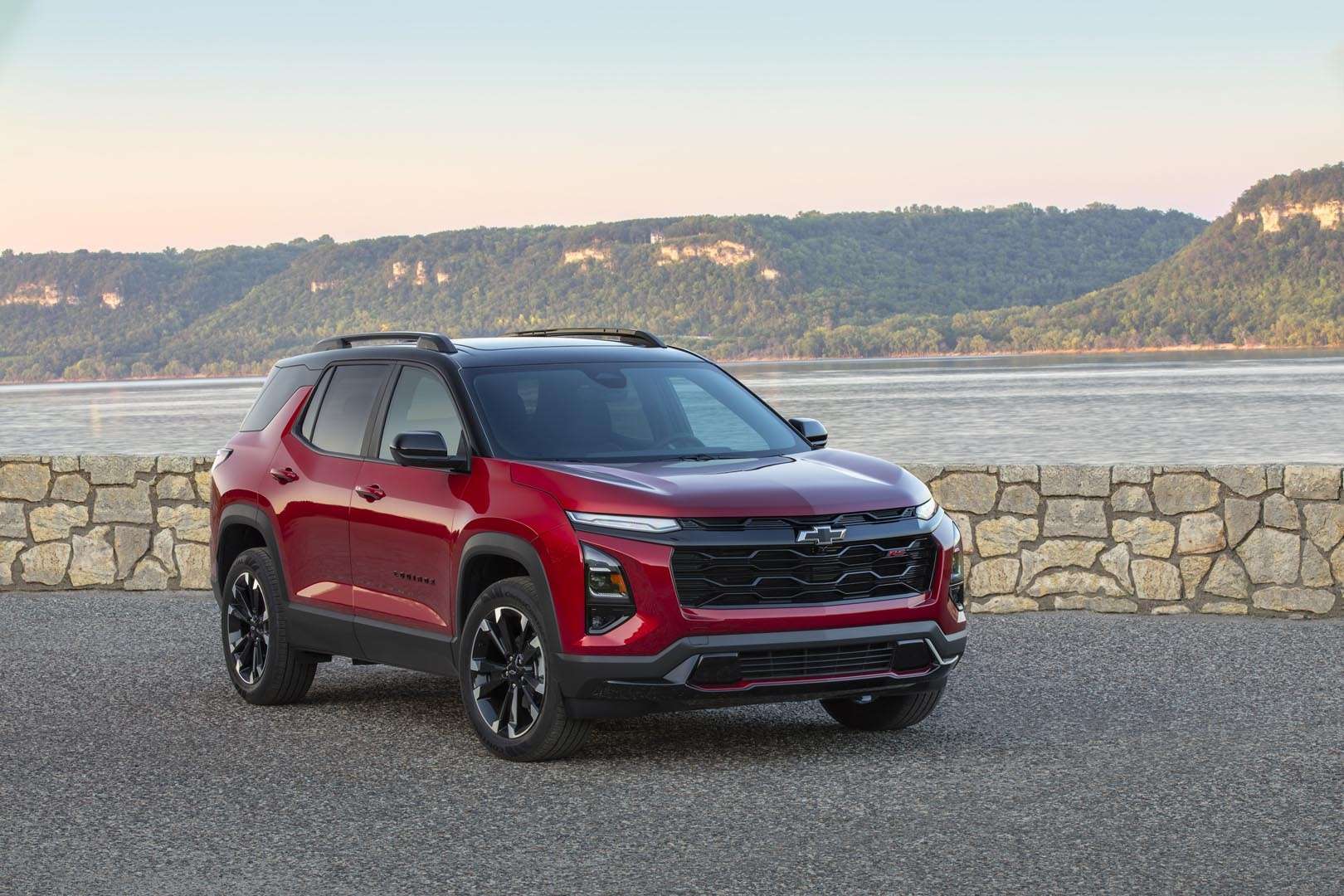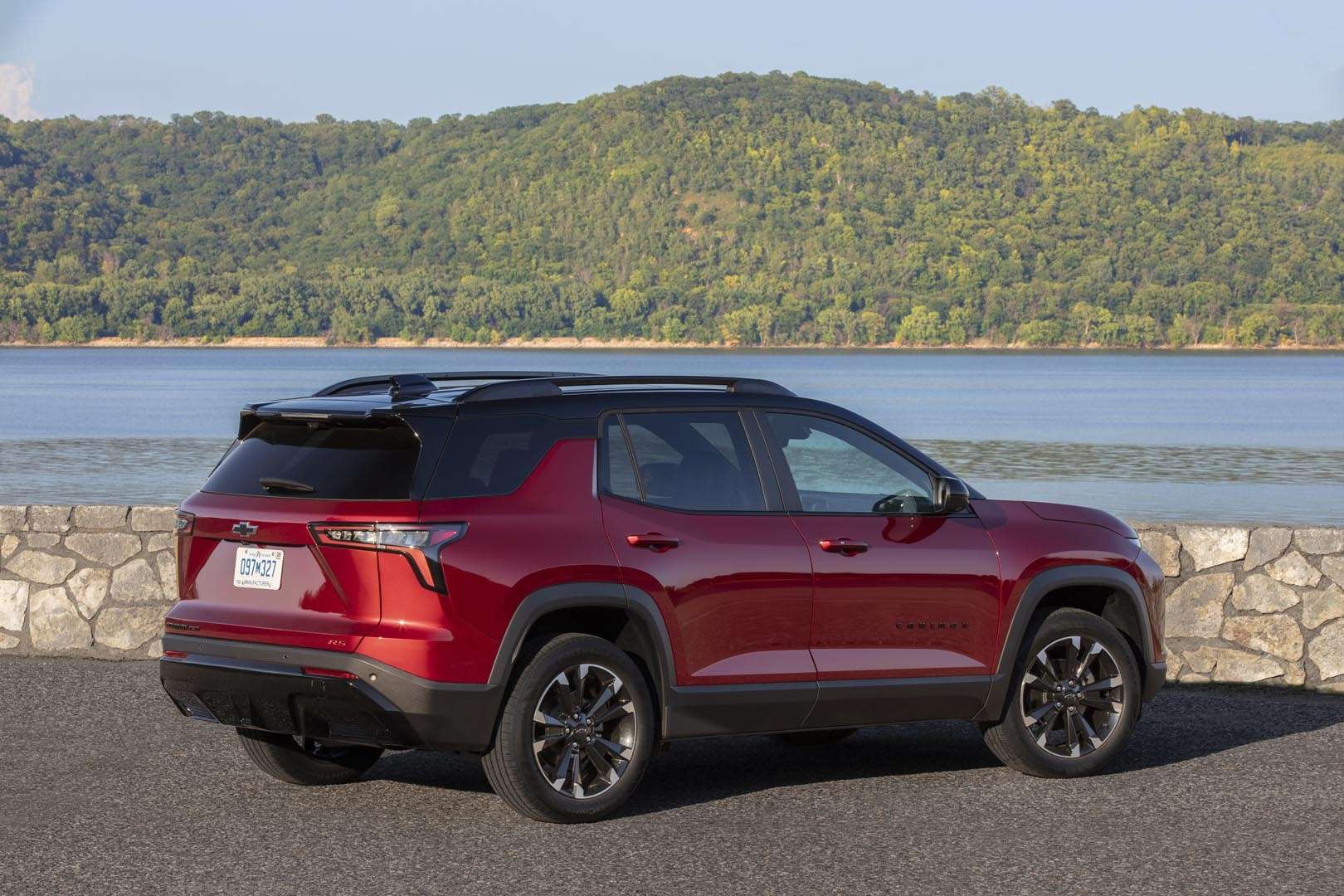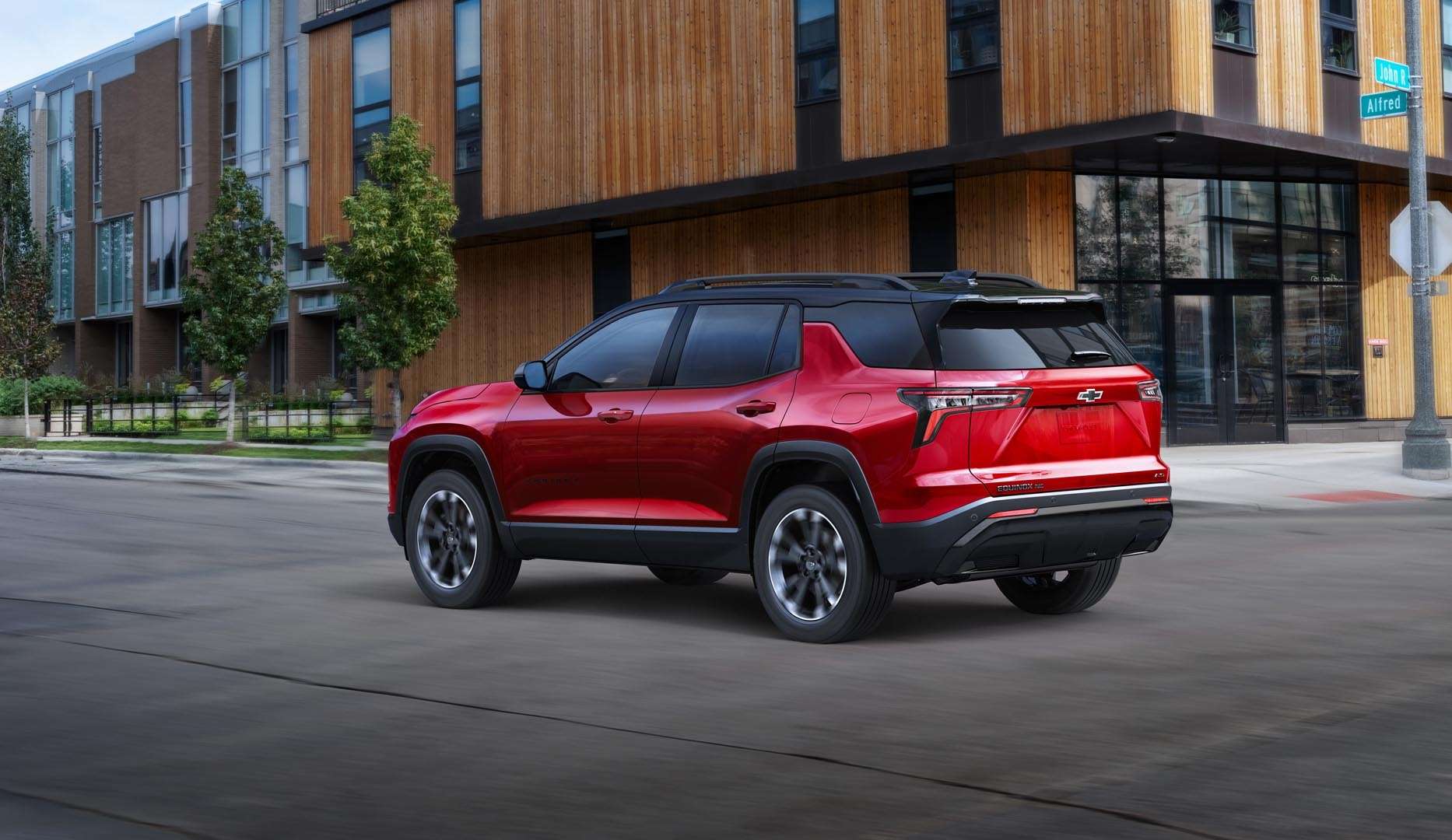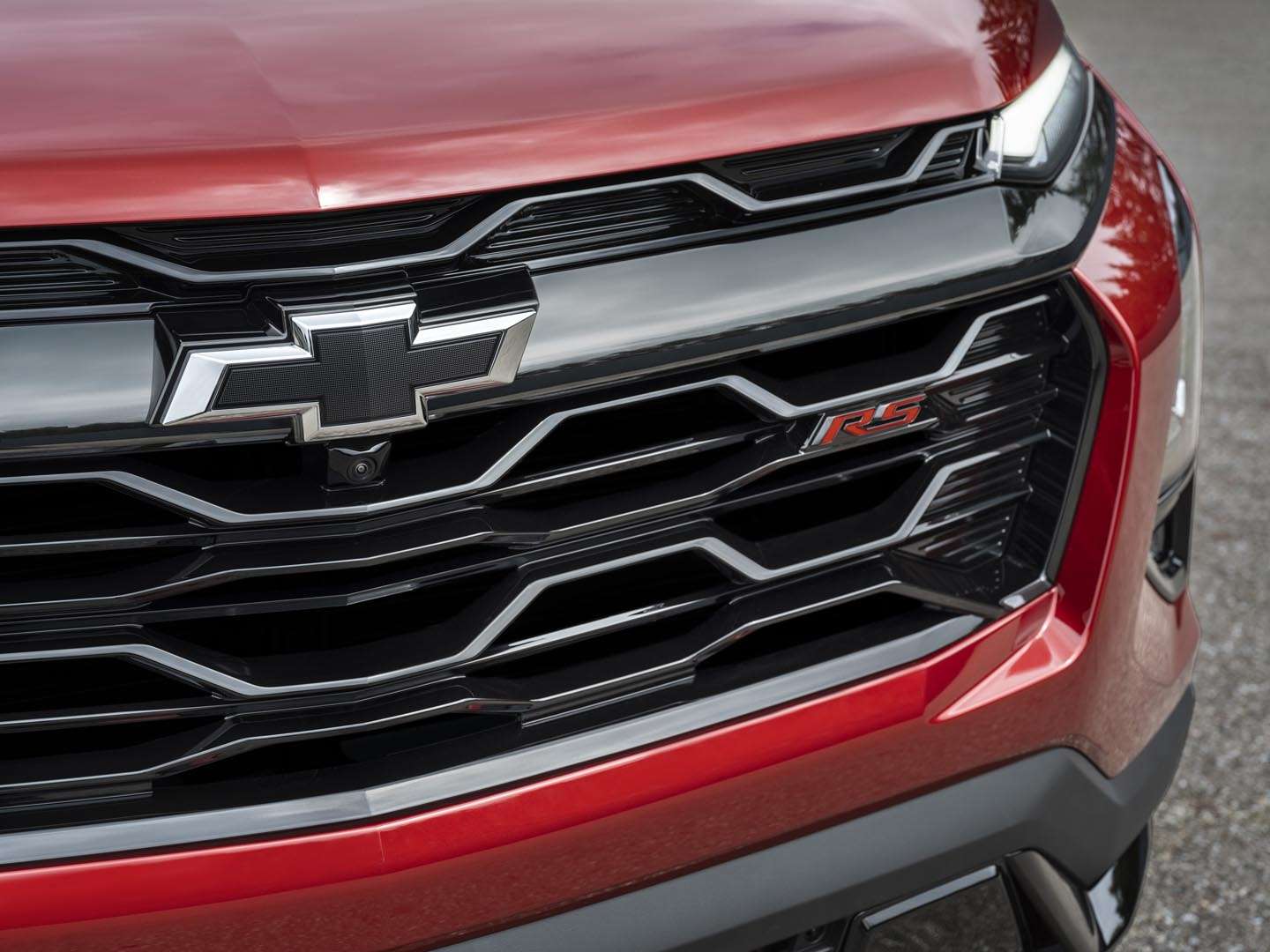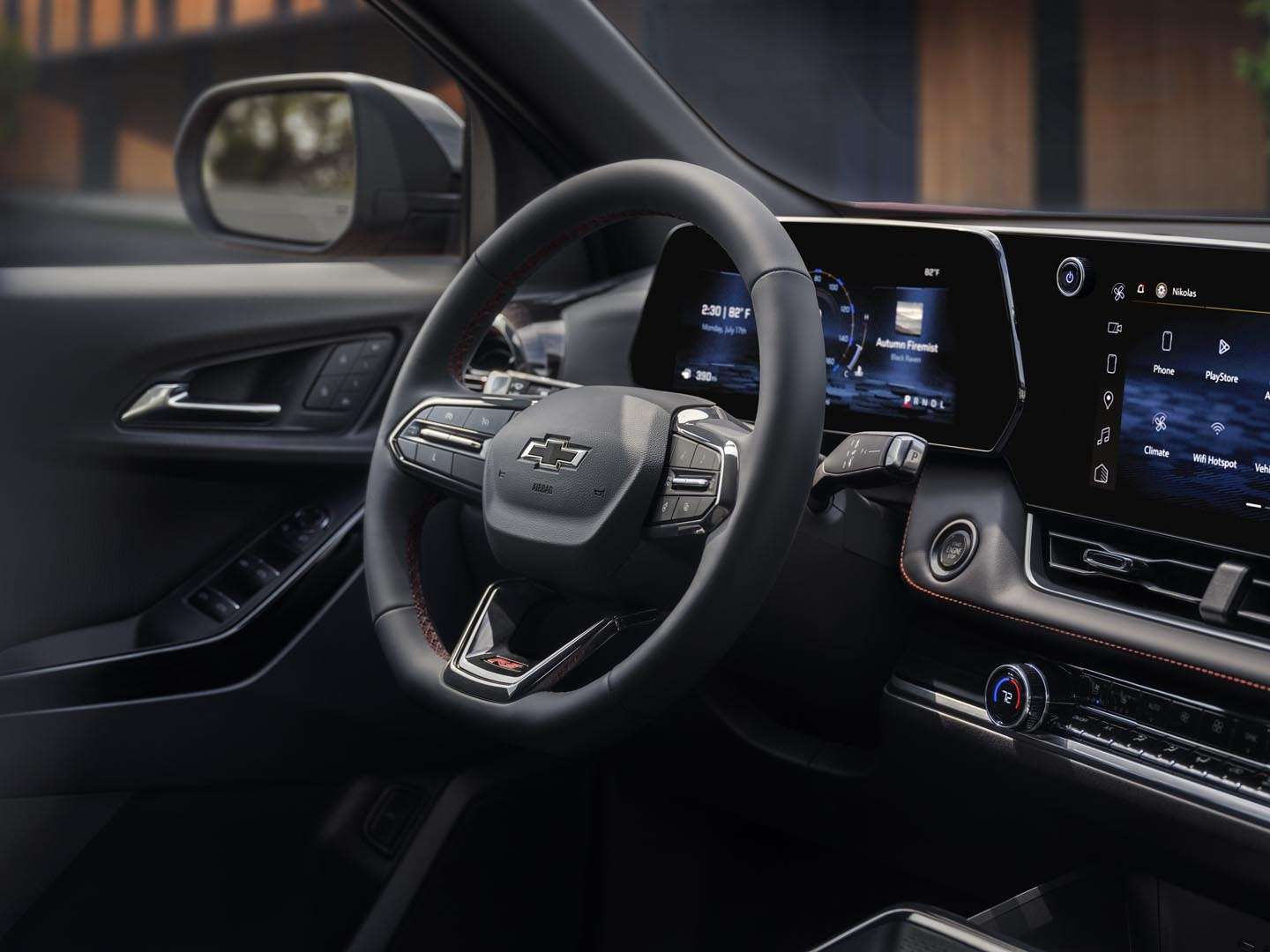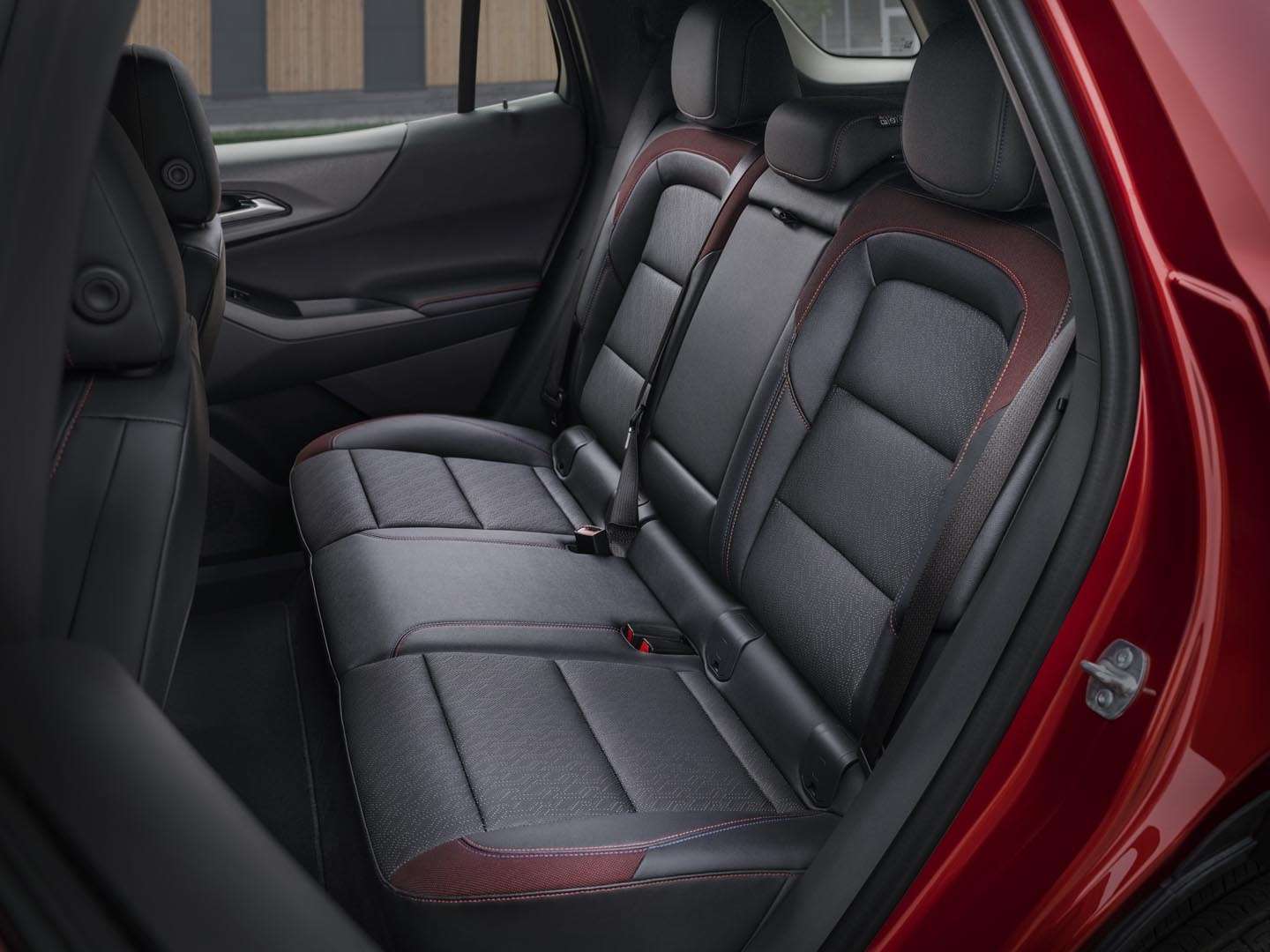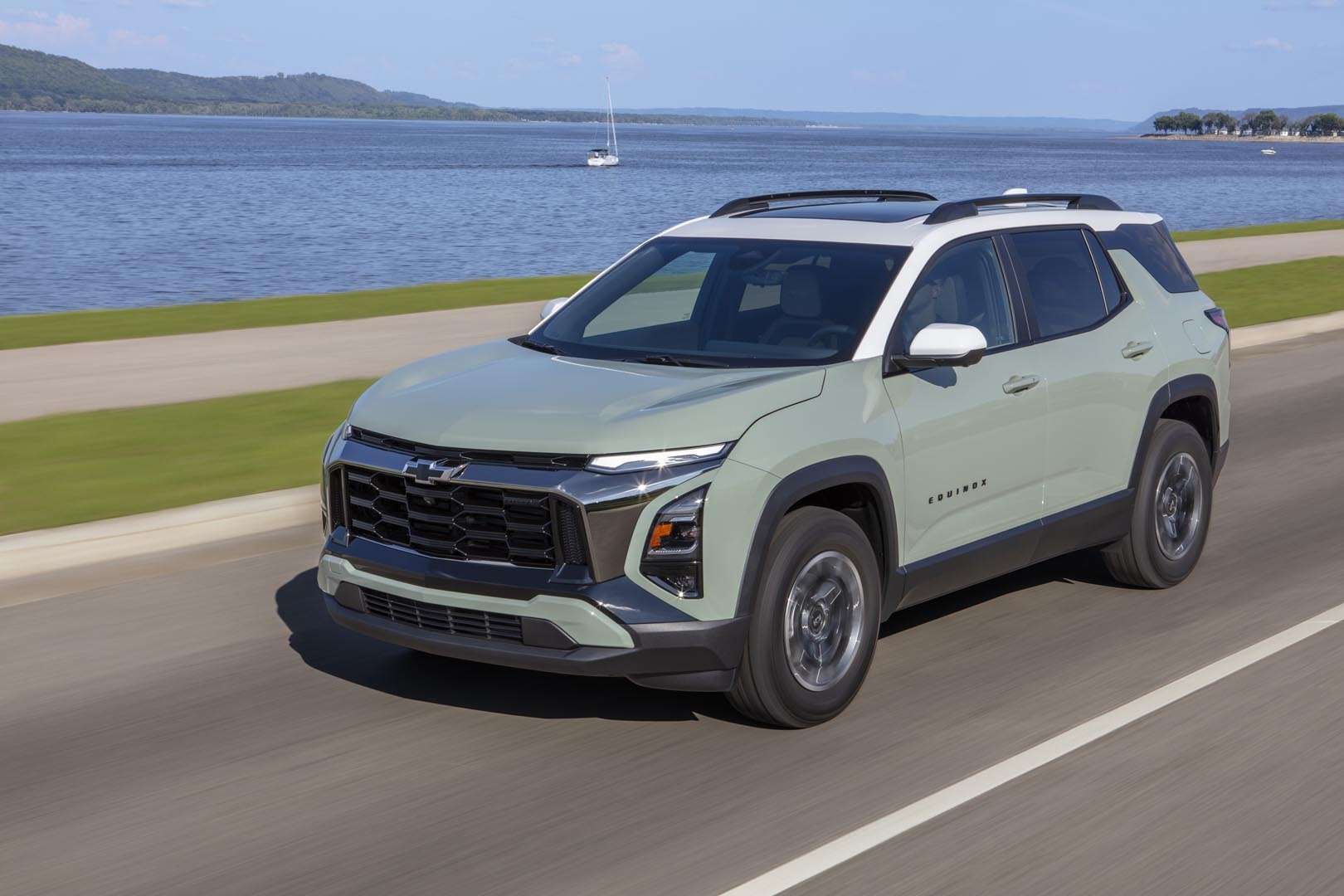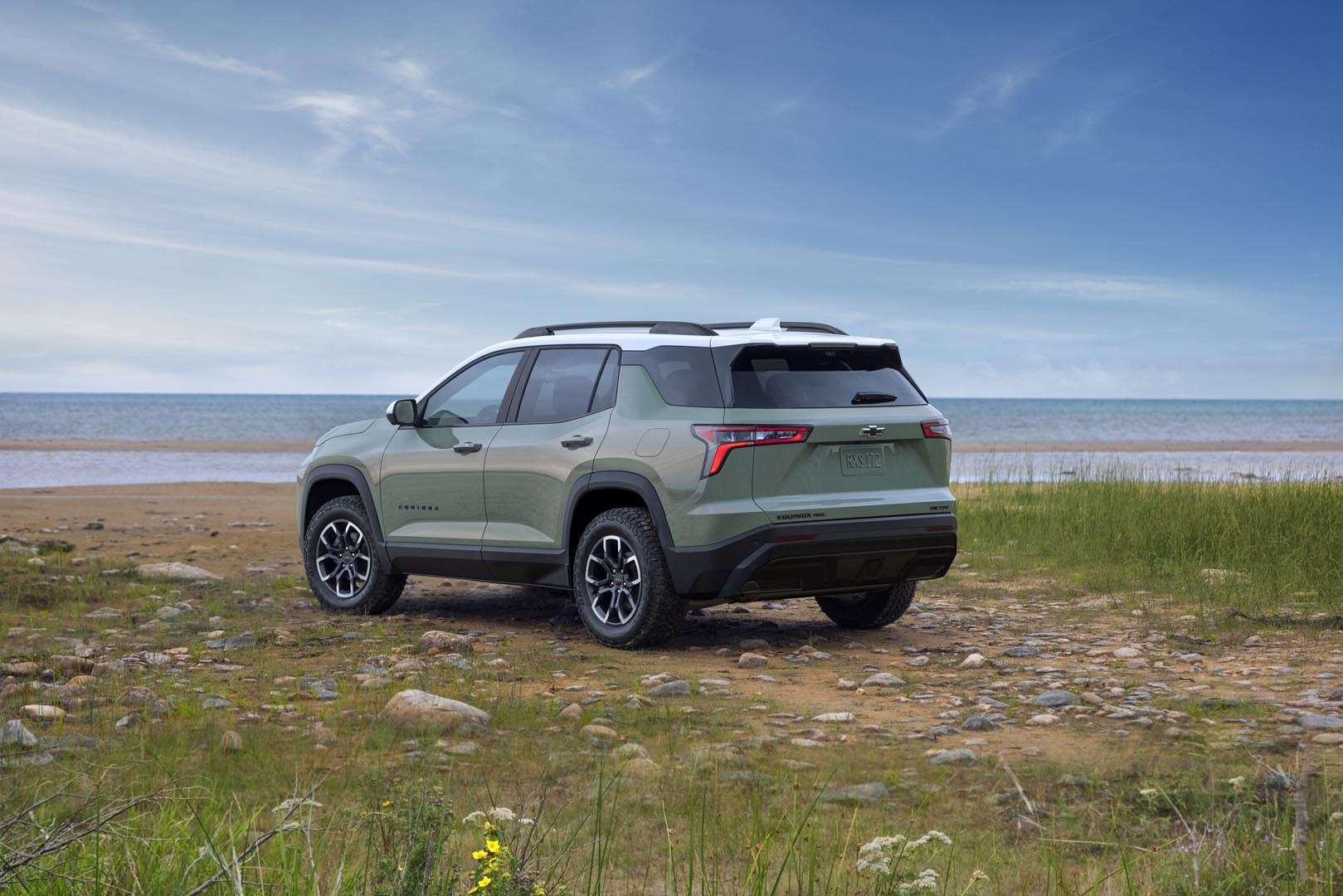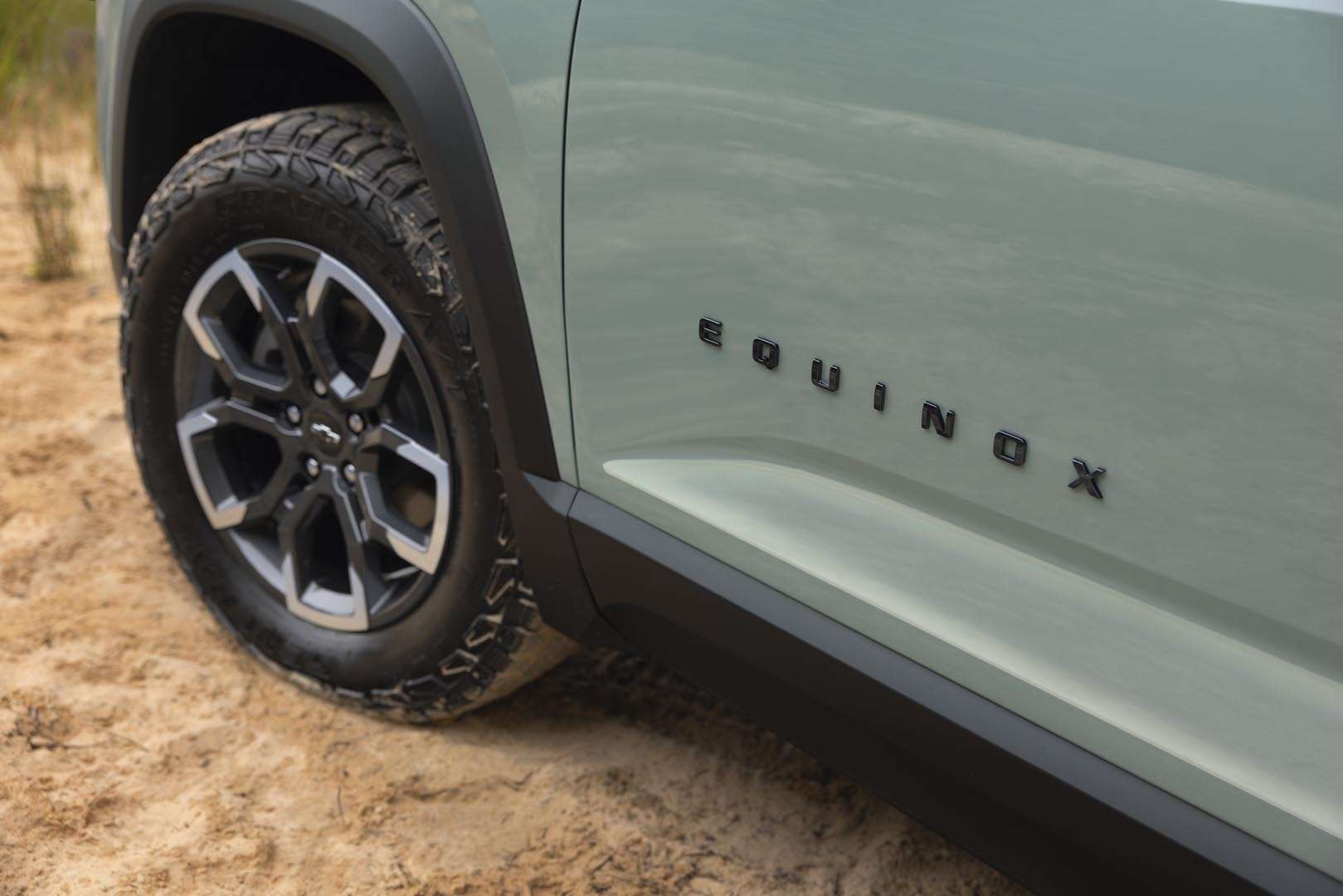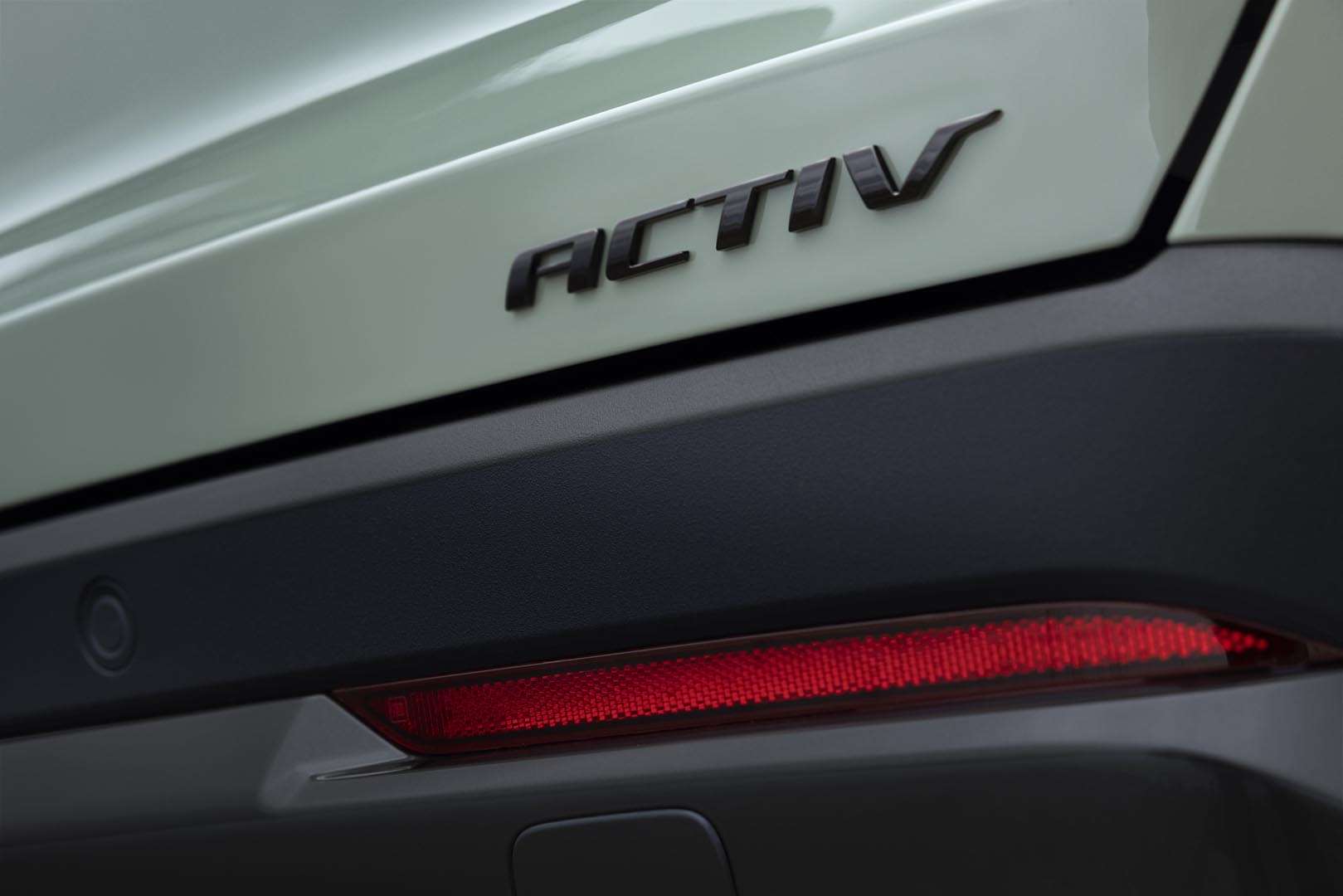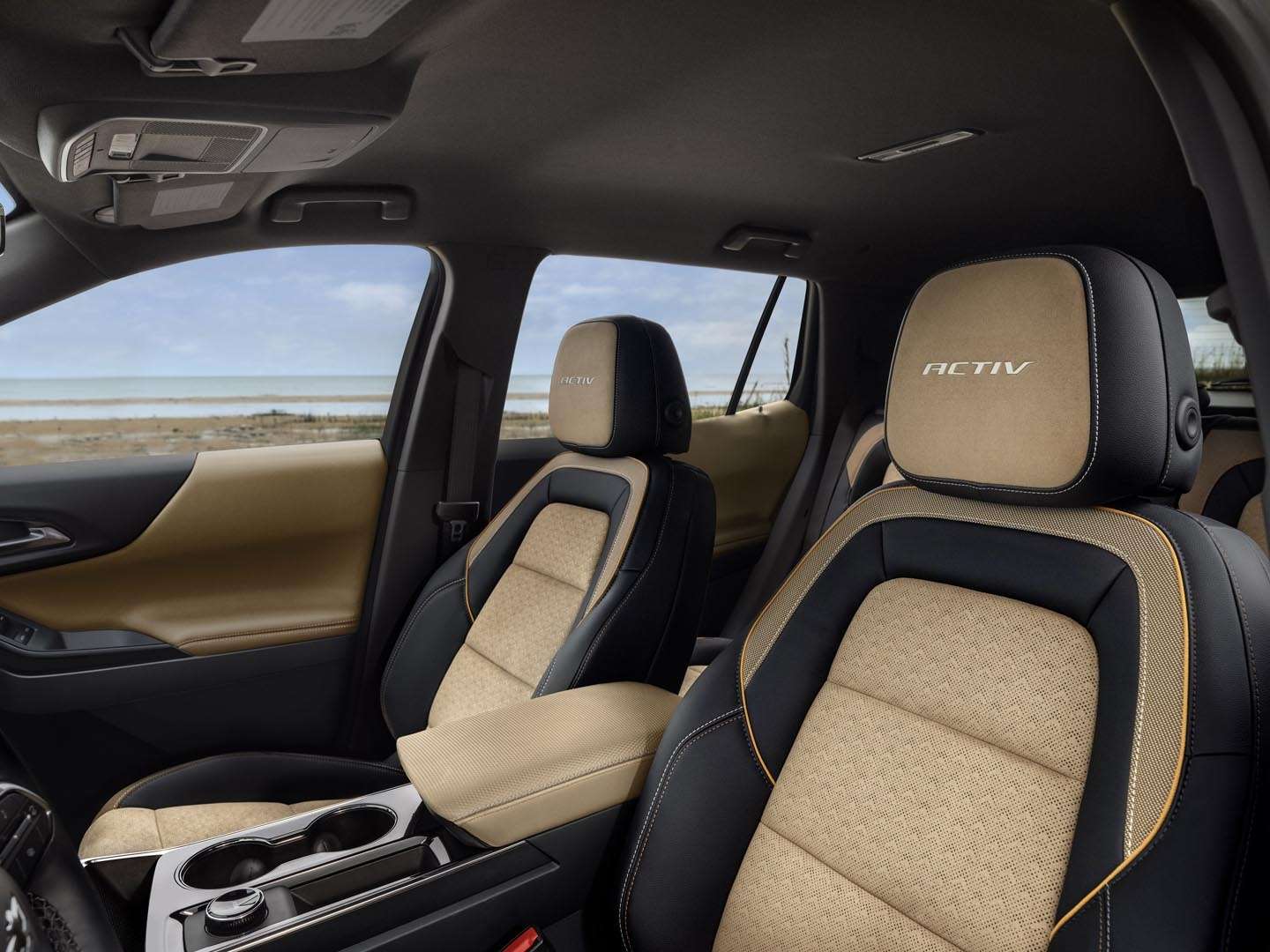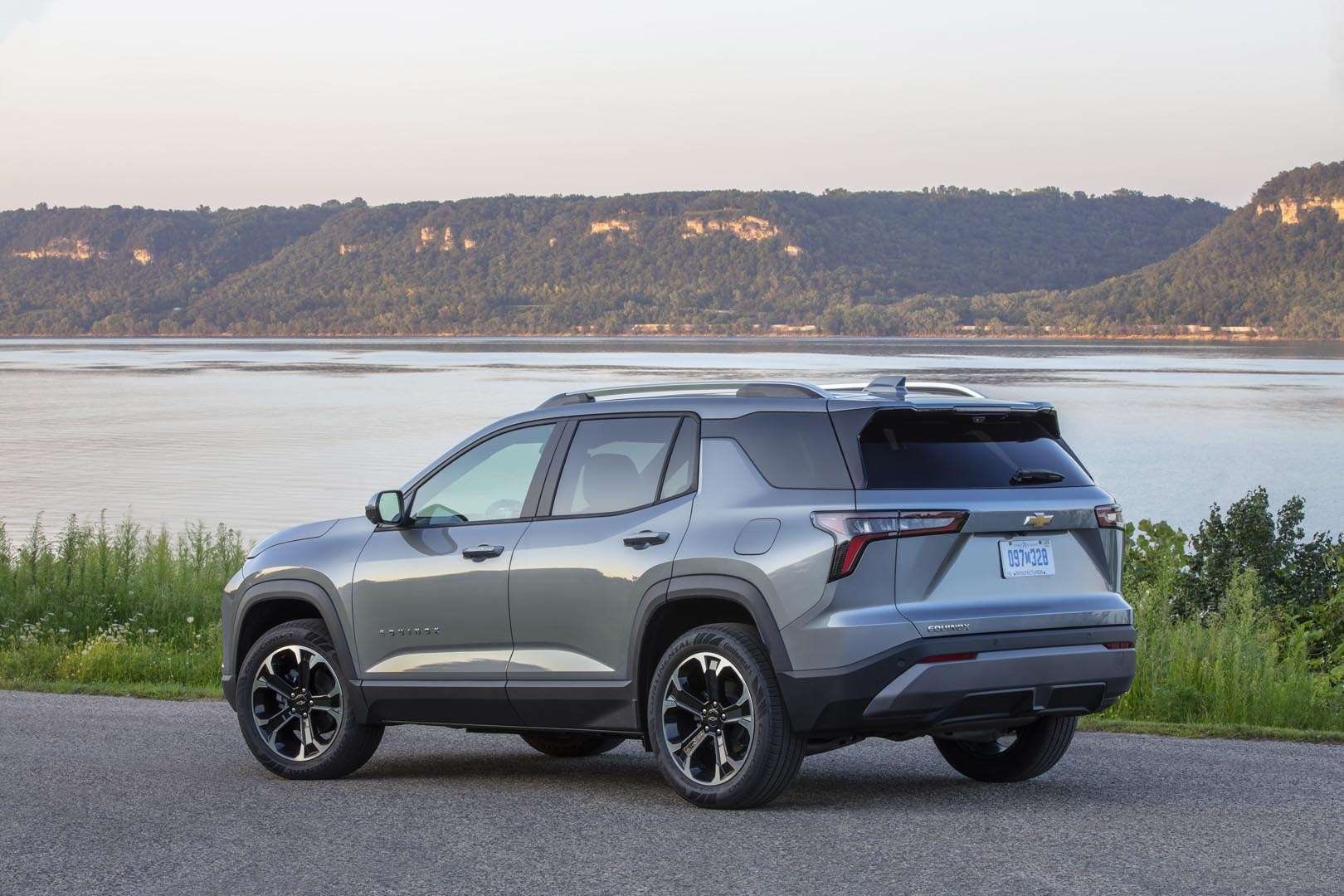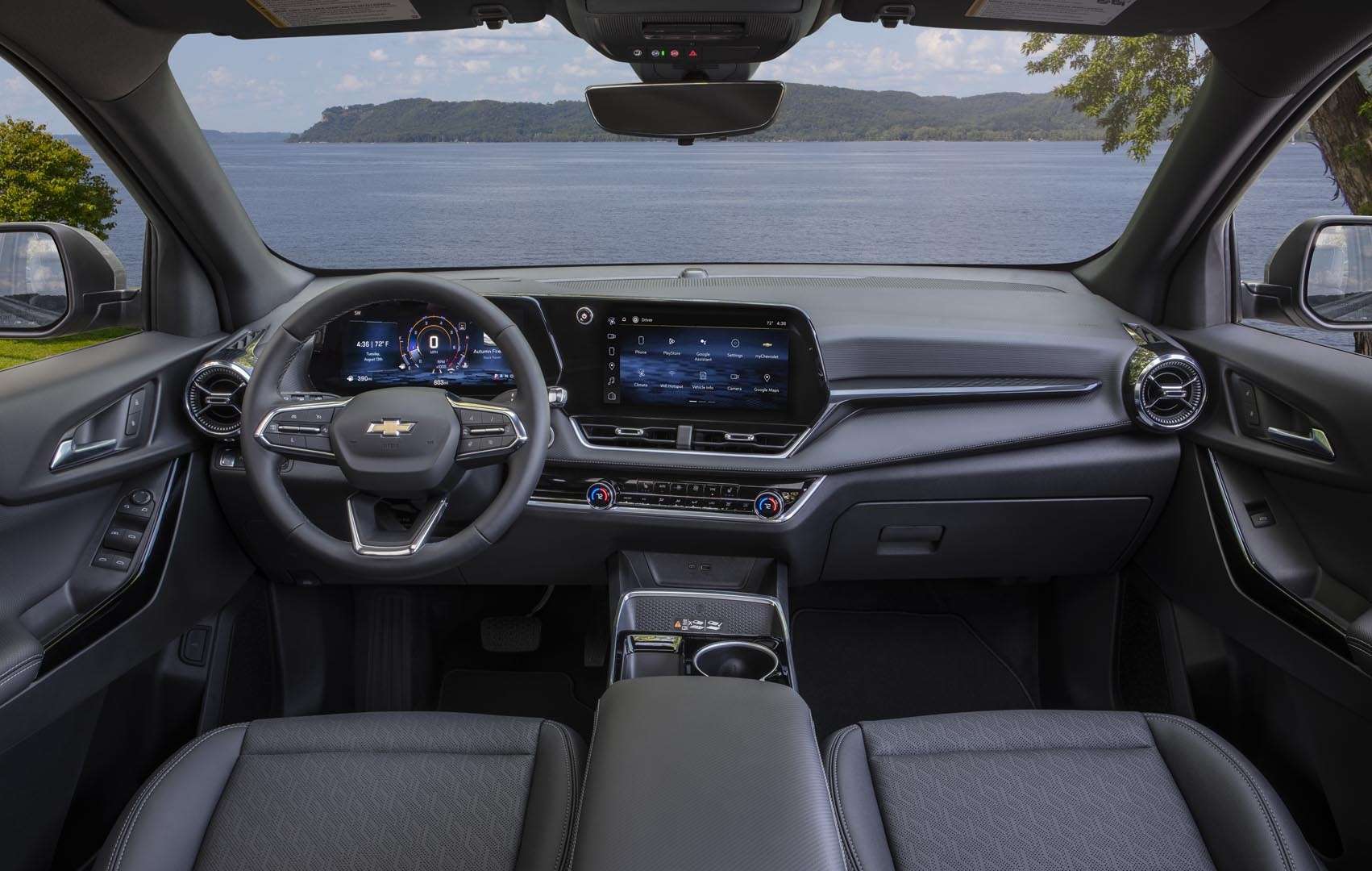
CHEVROLET Equinox 2026
Significantly improved, but overshadowed by the Equinox EV
Pros and cons
Pros
- Efficient transmission
- Balanced handling
- Good soundproofing
- Modern interior design
- Improved fit and finish
- Comfortable front seats
Cons
- Some unconventional controls
- Limited cargo space
- Footrest positioned too close
- Limited visibility
- Overshadowed by the Equinox EV
Overview
Admittedly, General Motors has pulled off a real coup with the Chevrolet Equinox EV, at least in Quebec. This model not only dominated the electric vehicle sales charts in the province in 2024, but it also revived the nameplate of a model that had been languishing in the lower tiers of the rankings, both in terms of its performance and its sales success.
The positive reputation—largely well-deserved—of the Equinox EV could also benefit the gasoline-powered version of this SUV, especially since it underwent a major redesign for the 2025 model year. The two vehicles still don't share any body panels or powertrain components, but their similarities remain evident. This is particularly true inside, where the outdated dashboard of the previous-generation gasoline Equinox has been replaced by the modern, tech-forward interior introduced in the electric version.
This evolution comes at a price, of course, even though GM has largely retained the architecture, powertrain, and dimensions of the previous generation. First, the LS trim level has been discontinued, making the LT the base model. Since prices have increased twice, in 2025 and again in 2026, buyers now have to pay some $5,400 more than in 2024 to purchase a base front-wheel-drive Equinox ($36,998, including freight, preparation, and dealer fees).
The price difference between the 2024 and 2026 RS variants is similar, but it narrows to just under $2,000 when comparing the LT trims of the two model years. It's worth noting that Chevrolet is one of the few manufacturers that still offers an SUV of this size with only two-wheel drive. We can safely assume that most buyers will pay the extra $2,300 for all-wheel drive.
Does the Equinox's facelift and its new eight-speed transmission give it what it takes to compete with the Toyota RAV4, Honda CR-V, Hyundai Tucson, and Nissan Rogue—the perennial sales leaders in this segment? And how does it compare to the electric version in terms of price?
Check out our review section for the opinions of our automotive experts, summarized in five highlights.
Verdict
Chevrolet did a great job updating the gasoline-powered Equinox. First, on the mechanical side: its small turbocharged engine still isn't particularly impressive, but the new eight-speed transmission at least allows it to keep pace with the competition. The driving experience has also improved significantly thanks to noticeably better steering and a more balanced suspension than ever before.
The interior is also more pleasant, with the bland atmosphere of the previous model replaced by a more refined finish, modern interfaces, and better-designed seats. Driving the Equinox no longer feels like piloting a vehicle hastily rented from the airport, although in terms of space, many rivals still outdo GM's offering.
Several of these rivals are also priced lower than the Equinox, while offering at least the same level of comfort, quality, features, and fuel economy. That said, the model's strongest competition will likely come from its own brand, with the addition of the "EV" suffix. With monthly payments only slightly higher than those of the gasoline-powered Equinox, the electric version promises substantial savings on operating costs.
Evaluation
Two more gears feels good
The base engine in the previous generation Equinox often felt like it was struggling, even in city driving. The optional 2.0-liter turbocharged engine eliminated this feeling, but Chevrolet discontinued it at the end of 2020 due to low demand.
The redesigned Equinox uses the same 1.5-liter turbocharged four-cylinder as its predecessor, although the all-wheel-drive versions have gained 50 to 70kg. Still, the 2025 model feels noticeably more responsive than the one it replaced. The secret? GM wisely added two gears to the automatic transmission, which now has eight.
This change makes it easier to exploit the 203 pound-feet of torque, since the engine more often revs within its sweet spot of 2,000 to 4,000 rpm. The result is smooth and fluid acceleration, at least in normal driving. However, the transmission becomes hesitant, even a little jerky, when the accelerator is pressed harder, for example when passing or merging on the highway. This is also where the 175 horsepower lose some steam.
On the other hand, the engine avoids the noisy and vibrating crescendos generated by the Chevrolet Traverse's 2.5-liter four-cylinder and the Colorado's 2.7-liter. It also consumes moderately, although some rivals easily beat the 8.9 L/100 km measured during our mainly highway test.
Comfort and handling go hand in hand
The Equinox we tested wore the RS badge, traditionally associated with Chevrolet's moderately sporty models. However, despite the 19-inch wheels and red trim that accompany this emblem, agility doesn't match that of the Mazda CX-5 and CX-50, the segment champions in this regard. The body leans a little too much in corners, and the front end exhibits a slight tendency to understeer, even when all-wheel drive is engaged—something you have to repeat after each start, which could lead to unfortunate oversights in winter.
Despite this, overall handling is sound and generally comfortable. The bouncy damping of the previous generation is gone, and the steering is significantly more precise. Its well-balanced assistance even allows some road feel to filter through, which remains quite rare among compact SUVs. The safe, stable, and easy-to-modulate braking adds to the driving pleasure, which is on par with that of a Honda CR-V or a Nissan Rogue, for example. The same can be said of the soundproofing, although tire noise remains a little too noticeable at cruising speeds.
A contemporary interior, but not without its challenges
It's amazing what a difference seven years makes! Perfectly up-to-date when the previous version of the Equinox was launched, its interior already looked dated compared to that of the latest electric version.
The solution: carry over the electric theme into the new gasoline-powered generation. This works very well, even though the central screen measures 11.3 inches, rather than the 17.7 inches displayed in the Equinox EV. Paired with a fully digital instrument cluster, this interface gives a very modern and technological look and provides a wealth of information to the occupants. Navigating it is quite easy, especially since Chevrolet has retained separate—and thankfully physical—controls for the ventilation and heating elements.
Like most recent GM vehicles, the Equinox has swapped its gear lever for an electronic selector located to the right of the steering wheel, exactly where the wiper stalk is located in most vehicles on the market. Since this shifter is identical to the turn signal lever, it's far too easy to shift the transmission into neutral when you simply want to spray some washer fluid.
The idea of relegating headlight and trip computer control to the central display isn't the best either. And what about the hazard lights button mounted on the ceiling, in a row of identical switches? This can create a real safety issue in an emergency. Side and rear visibility are another weak point of the Equinox due to the width of the roof pillars.
A controversial driving position
In addition to rejuvenating the dashboard of its compact SUV, Chevrolet has tightened its assembly and invested in much higher-quality materials than before the redesign. It has also redesigned the front seats, whose prior soft padding has given way to good support for longer trips.
However, the manufacturer has not managed to rid the Equinox of its overly high and prominent footrest. This positioning is detrimental to the comfort of tall people who don't want to sit too far back to avoid driving with their arms outstretched. This appears to be an intrinsic flaw of the platform, since the same irritant also plagues the Chevrolet Traverse and Cadillac XT4, for example. We also found the driver's seat too high, even when adjusted to its lowest position.
On the other hand, four adults or a family with bulky child seats will find plenty of space in the Equinox, except perhaps for their luggage. Despite its square shape and a floor that sits flush with the bumper, the rear compartment lacks the height and width to compete with that of a Honda CR-V or a Volkswagen Tiguan, for example.
Its worst enemy? The Equinox… electric!
When comparing the retail price of the Equinox with that of the electric variant, there is a difference of nearly $10,000 in favor of the gasoline model. But at the time of writing, in October 2025, the electrified version offered a 0% financing rate over 6 years, rather than the 4.99% charged for the internal-combustion Equinox. On a 4-year lease, a 1% difference also favored the electric model. This was without considering the $4,000 after-tax provincial subsidy applied to the latter.
Therefore, the financing option cost only $27 more for an all-wheel-drive Equinox EV RS equipped mostly like our tested gasoline model. When leasing, the difference climbed to $86. However, based on the official Natural Resources Canada fuel consumption ratings for both engine types, and assuming an annual usage of 20,000km, we calculated potential energy savings of nearly $200 per month for the electric version if charging it exclusively at home. This quickly recoups the additional acquisition cost.
Of course, this doesn't take into account the substantial increase in electricity consumption we observed during a winter test of the Equinox EV, nor the corresponding decrease in range. Frequent fast charging would also reduce the advantage of the electric variant.
Drivers who rarely travel more than 300 km in a single day, and who can install a residential charging station, will probably not mind these drawbacks. It's a safe bet that the Equinox EV will continue to eclipse its petrol-powered cousin in the Quebec market, unless this financial picture completely changes.
Safety features
- Antilock brakes with electronic brakeforce distribution and brake assist
- Stability and traction control
- Hill-start assist
- Front airbags
- Front side airbags
- Side curtain airbags
- Front seatbelt pretensioners
- Five adjustable head restraints
- Rear seat alert
- Rearview camera
- Tire pressure monitor
- Forward collision alert
- Forward automatic emergency braking with pdestrian and cyclist detection
- Lane departure alert with steering assist
- Automatic high-beams
- Blind-spot monitoring with cyclist detection and steering assist
- Rear cross-traffic alert
- Adaptive cruise control
- Rear automatic emergency braking
- Rear parking sensors
- Surround-view monitor and rear pedestrian detection (included in Safety and Technology package)
Crash test results
National Highway Traffic Safety Administration
Overall score: 5/5
Frontal impact: 5/5
Side impact: 5/5
Rollover resistance: 4/5
Insurance Institute For Highway Safety
Moderate overlap frontal impact: 3/4
Small overlap frontal impact: 4/4
Side impact: 4/4
